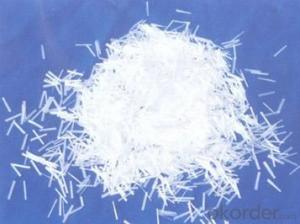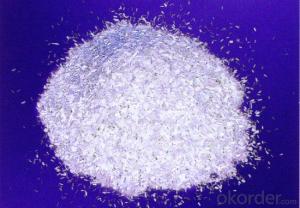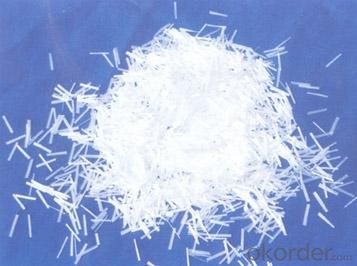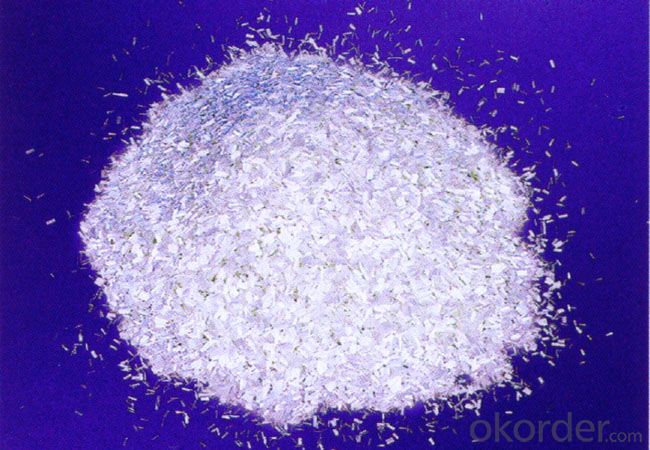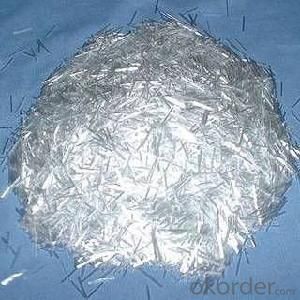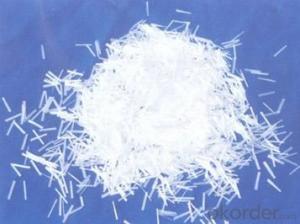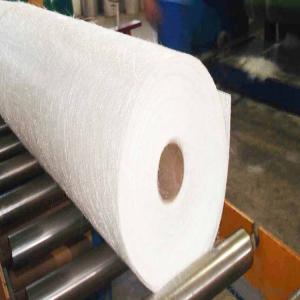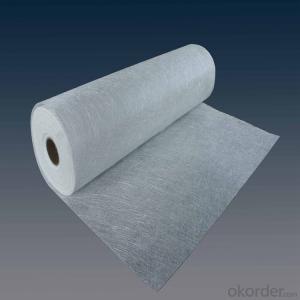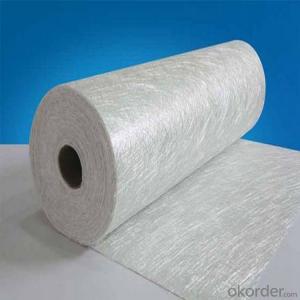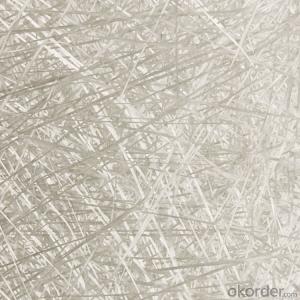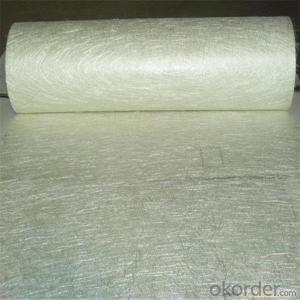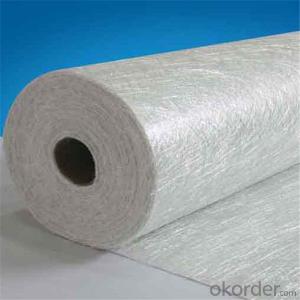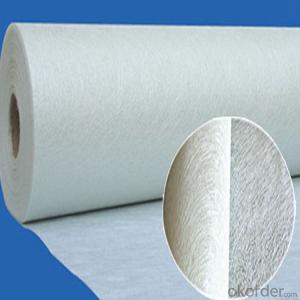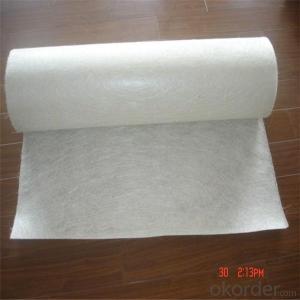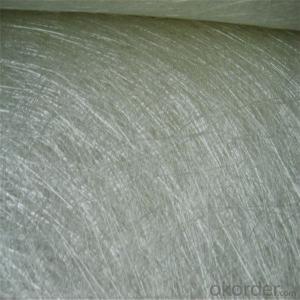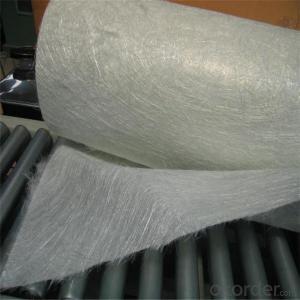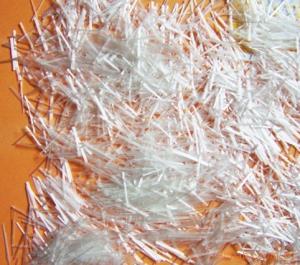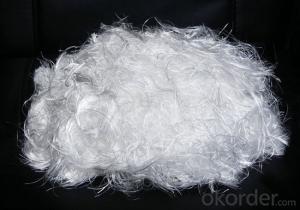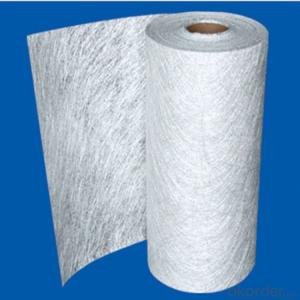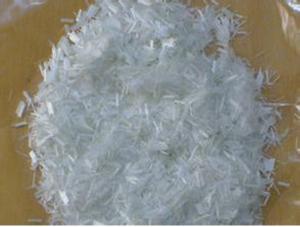8oz Chop Strand Fiberglass - Wet Fiber Glass Chopped Strands
- Loading Port:
- China Main Port
- Payment Terms:
- TT or LC
- Min Order Qty:
- 20000 kg
- Supply Capability:
- 200000Kg Per Month kg/month
OKorder Service Pledge
OKorder Financial Service
You Might Also Like
1.Brief Introduction
Wet Chopped Strands are compatible with unsaturated polyester, epoxy and phenolic resins and gypsum.
Wet Chopped Strands have moderate moisture content and deliver outstanding flowability, including dispersion in water and in gypsum.
2.Product Features:
Excellent dispersion in water
Good bonding with multiple resins
Outstanding tensile and tear properties in the final product
3.Product Specifications:
Property | Fibre diameter | Moisture Content | Size Content | Chop |
| (%) | (%) | (%) | (%) |
Mathods | IS01888 | ISO3344 | ISO1887 |
|
3mm | ±10 | ≤3.0 | 0.1±0.05 | 98 |
6mm | ||||
12mm | ||||
18mm |
Special specification can be produce according to customer requirements.
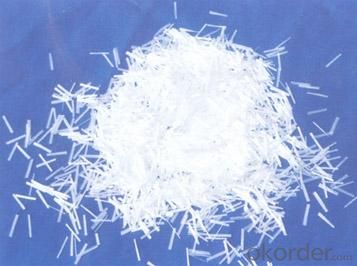
4.FAQ
a.Packaging:
Each bag can be taken (15-25kgs)。 Could also take a big container bag.
b.Storage:
Unless otherwise specified, It should be stored in a dry, cool and rain-proof area. It is recommended that the room temperature and humidity should be always maintained at 15℃~35℃ and 35%~65% respectively.
- Q: What are the different types of glass fibers used in chopped strand?
- Chopped strand commonly utilizes various types of glass fibers. These encompass E-glass fibers, S-glass fibers, C-glass fibers, and AR-glass fibers. E-glass fibers, the most prevalent glass fiber in chopped strand, are crafted from a glass variant known as "E-glass." This glass type is esteemed for its excellent strength and electrical insulation properties. E-glass fibers find utility in diverse applications, including automotive components, construction materials, and electrical insulation. Another glass fiber employed in chopped strand is S-glass fibers. S-glass is renowned for its high strength and modulus. It is particularly favored in applications necessitating exceptional mechanical properties, such as aerospace parts and military vehicles. C-glass fibers, derived from a glass variety called "C-glass," are distinguished by their resistance to chemical corrosion. This attribute renders C-glass fibers suitable for applications involving exposure to harsh chemicals, like chemical storage tanks and pipes. AR-glass fibers, also referred to as alkali-resistant glass fibers, are specially engineered to withstand alkaline environments present in certain applications like concrete reinforcement. These fibers possess a unique surface treatment that safeguards them from degradation when exposed to alkaline substances, making them optimal for use in construction materials. In summary, the assortment of glass fibers employed in chopped strand offers a diverse range of properties and characteristics, rendering them suitable for various applications. By selecting the appropriate glass fiber type, manufacturers can fabricate chopped strand products that precisely meet the specific requirements of their intended use.
- Q: Can fiberglass chopped strand be used in filtration applications?
- Yes, fiberglass chopped strand can be used in filtration applications. It is commonly used as a filtration media due to its high strength, chemical resistance, and ability to capture and retain solid particles in various filtration processes.
- Q: How is fiberglass chopped strand used in the insulation industry?
- Fiberglass chopped strand is commonly used in the insulation industry due to its excellent thermal and acoustic properties. Chopped strand refers to small, random lengths of fiberglass that are typically mixed with binders and then processed into insulation products such as batts, blankets, and loose-fill insulation. In the manufacturing process, the chopped strands are dispersed evenly throughout the insulation material, creating a network of fibers that help trap air and reduce heat transfer. This network of fibers provides excellent thermal insulation, helping to keep buildings warm in cold weather and cool in hot weather. Additionally, fiberglass chopped strand insulation is known for its sound absorption capabilities. The random arrangement of fibers helps to reduce sound transmission, making it an ideal choice for noise control in buildings, especially in commercial and industrial settings where noise reduction is crucial. Furthermore, fiberglass chopped strand insulation is non-combustible, which means it does not contribute to the spread of fire. This makes it a safe choice for insulating buildings, as it helps to contain fire and prevent its spread. Overall, fiberglass chopped strand plays a vital role in the insulation industry by providing effective thermal insulation, sound absorption, and fire resistance. Its use in various insulation products ensures energy efficiency, comfort, and safety in buildings.
- Q: What are the applications of fiberglass chopped strand?
- Fiberglass chopped strand has a wide range of applications due to its unique physical and mechanical properties. Here are some common applications: 1. Reinforcement in composite materials: Fiberglass chopped strand is extensively used as reinforcement in composite materials such as fiberglass-reinforced plastics (FRP). The strands are mixed with resin to create a strong and lightweight material that is widely used in industries like automotive, aerospace, construction, and marine. 2. Insulation: Fiberglass chopped strand is commonly used as insulation material in various applications. It is an excellent thermal insulator, making it suitable for insulating walls, roofs, pipes, and appliances. Fiberglass insulation also provides soundproofing properties, making it ideal for applications requiring noise reduction. 3. Filtration and separation: The fine fibers of fiberglass chopped strand are often used in filtration and separation processes. They can be manufactured into filter media to remove impurities from air, water, oil, and other fluids. Fiberglass filters are commonly used in HVAC systems, industrial applications, and even in face masks. 4. Electrical insulation: Due to its high dielectric strength and resistance to electrical conductivity, fiberglass chopped strand is widely used as electrical insulation material. It is commonly used in electrical cables, transformers, circuit boards, and other electrical components to protect against electrical current leakage and ensure safety. 5. Reinforcement in concrete: Fiberglass chopped strand is also used as a reinforcement material in concrete structures. It helps increase the strength and durability of concrete, making it suitable for applications like bridges, roads, tunnels, and buildings. Fiberglass-reinforced concrete (FRC) offers enhanced resistance to cracking, impact, and corrosion. 6. Automotive applications: Fiberglass chopped strand is extensively used in the automotive industry for various applications. It is commonly used in the manufacturing of car bodies, interior panels, bumpers, and other components. Its lightweight and high strength properties make it an ideal material for improving fuel efficiency and overall performance. These are just a few examples of the applications of fiberglass chopped strand. Its versatility, durability, and cost-effectiveness make it a preferred choice for various industries and applications.
- Q: Can fiberglass chopped strand be used in the production of aerospace structures?
- Yes, fiberglass chopped strand can be used in the production of aerospace structures. Fiberglass chopped strand is a versatile material that offers several benefits for aerospace applications. It has high strength-to-weight ratio, excellent thermal and electrical insulation properties, and good resistance to corrosion and chemicals. In aerospace structures, fiberglass chopped strand can be used in the manufacturing of composite materials, such as fiberglass-reinforced polymers (FRPs) or fiber-reinforced composites. These composites provide enhanced strength and durability while being lightweight, making them ideal for aerospace applications where weight reduction is crucial. Fiberglass chopped strand can be used to reinforce various components in aerospace structures, including fuselage sections, wings, landing gear, interior panels, and engine parts. It can be incorporated into the manufacturing process through techniques such as filament winding, resin transfer molding, or hand lay-up. Furthermore, fiberglass chopped strand can also be customized to meet specific industry requirements, such as flame retardancy, low smoke emission, or high temperature resistance. This makes it suitable for meeting the stringent safety standards and performance criteria set by the aerospace industry. In conclusion, fiberglass chopped strand can be effectively utilized in the production of aerospace structures due to its strength, lightweight properties, and resistance to environmental factors. Its use in composite materials can contribute to the overall performance and efficiency of aerospace components.
- Q: Is fiberglass chopped strand suitable for the production of automotive components?
- Automotive components can be produced using fiberglass chopped strand, a reinforcement material commonly found in composite materials. This particular material possesses numerous advantages that render it appropriate for automotive applications. To begin with, fiberglass chopped strand exhibits exceptional strength and stiffness properties, both of which are crucial for withstanding a variety of loads and vibrations. It boasts a high tensile strength, which enhances the structural integrity of components, thus making it an ideal option for automotive manufacturers. Secondly, fiberglass chopped strand is lightweight, a highly desirable characteristic for automotive applications where reducing the overall weight of the vehicle takes precedence. The utilization of lightweight materials can contribute to improved fuel efficiency and vehicle performance. Furthermore, fiberglass chopped strand displays excellent resistance against corrosion, chemicals, and temperature fluctuations, making it suitable for automotive components exposed to harsh environments. Additionally, it offers commendable electrical insulation properties, a beneficial feature for components requiring electrical conductivity or insulation. What's more, fiberglass chopped strand proves to be cost-effective in comparison to materials such as carbon fiber, while still delivering satisfactory mechanical properties. This affordability makes it an appealing choice for automotive manufacturers seeking to strike a balance between performance and cost. In conclusion, fiberglass chopped strand stands as a fitting material for automotive component production due to its strength, lightweight nature, resistance to corrosion, and cost-effectiveness. These properties establish it as a reliable choice for various applications within the automotive industry.
- Q: Can fiberglass chopped strand be used in the production of wind turbine towers?
- Yes, fiberglass chopped strand can be used in the production of wind turbine towers. Fiberglass chopped strand is a type of reinforcement material that consists of short strands of fiberglass. It is commonly used in the manufacturing of composite materials, such as fiberglass-reinforced plastic (FRP) or fiber-reinforced polymer (FRP) composites. Wind turbine towers are often made of composite materials due to their lightweight and high strength-to-weight ratio characteristics. These materials provide the necessary stiffness and durability required to withstand the constant exposure to wind and other environmental conditions. Fiberglass chopped strand is an important component in the production of wind turbine towers as it helps to reinforce the composite material and enhance its overall structural integrity. The chopped strands are typically mixed with a resin matrix, such as epoxy or polyester, to create a strong and durable composite material. The fiberglass chopped strand provides additional strength and stiffness to the composite, allowing the wind turbine tower to withstand the forces exerted by strong winds and support the weight of the turbine blades. It also helps to prevent cracking or delamination of the composite material, ensuring the longevity and reliability of the wind turbine tower. In conclusion, fiberglass chopped strand is a suitable material for use in the production of wind turbine towers. Its reinforcing properties and compatibility with composite materials make it an ideal choice for creating strong and durable structures capable of withstanding the harsh conditions of wind turbine environments.
- Q: Can fiberglass chopped strand be used in electrical applications?
- Yes, fiberglass chopped strand can be used in electrical applications. Fiberglass chopped strand is made by cutting continuous strands of fiberglass into shorter lengths and can be used as a reinforcing material in various applications, including electrical components. Fiberglass chopped strand provides excellent mechanical strength and electrical insulation properties, making it suitable for use in electrical insulation materials, circuit boards, electrical enclosures, and other electrical components. It helps to improve the strength, durability, and electrical performance of these applications, making them more reliable and efficient. Additionally, fiberglass chopped strand can also be combined with resins to create composite materials with enhanced electrical properties for specific electrical applications.
- Q: How does the orientation of the chopped strand affect its performance?
- The orientation of the chopped strand plays a crucial role in determining its performance. When the strands are oriented in a specific direction, it enhances the strength and stiffness of the composite material. This directional alignment allows for better load distribution, improved impact resistance, and increased overall mechanical properties. On the other hand, random or unidirectional orientations may result in reduced performance as the loads may not be efficiently distributed, leading to weaker and less durable composite structures.
- Q: Can fiberglass chopped strand be used for reinforcing concrete?
- Yes, fiberglass chopped strand can be used for reinforcing concrete. It provides improved tensile strength and crack resistance to the concrete, making it more durable and resistant to damage. Additionally, fiberglass chopped strand is corrosion-resistant, lightweight, and easy to handle, making it a popular choice for concrete reinforcement in various construction applications.
Send your message to us
8oz Chop Strand Fiberglass - Wet Fiber Glass Chopped Strands
- Loading Port:
- China Main Port
- Payment Terms:
- TT or LC
- Min Order Qty:
- 20000 kg
- Supply Capability:
- 200000Kg Per Month kg/month
OKorder Service Pledge
OKorder Financial Service
Similar products
Hot products
Hot Searches
Related keywords
